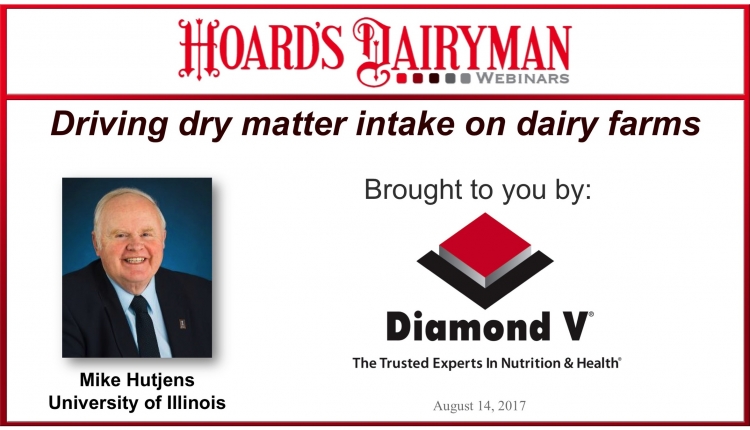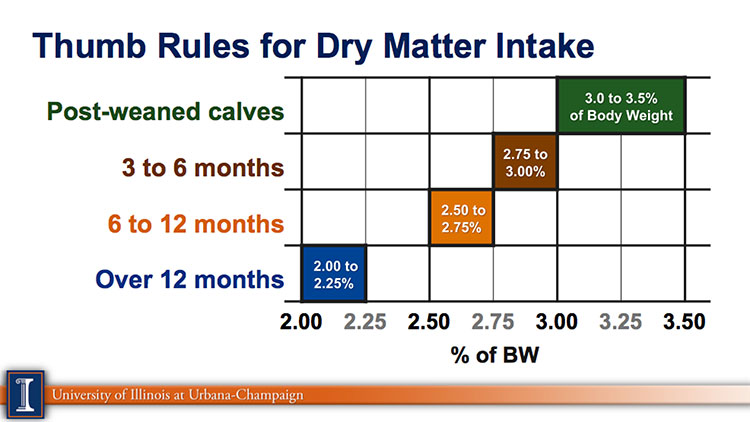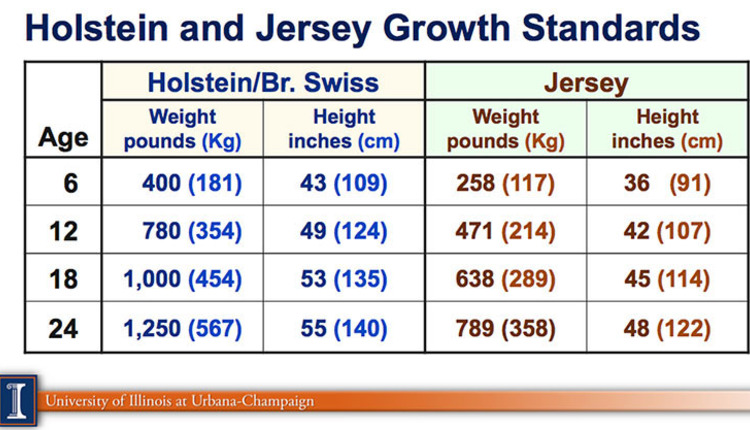
The August webinar focused on dry matter intake in four management groups: lactating cows, dry cows, growing heifers, and preweaned calves.
Mike Hutjens, University of Illinois, focused on the topic “Driving dry matter on dairy farms.” The goal with lactating cows is to optimize feed efficiency, which in turn, is milk production efficiency.
Things to remember with milking cow dry matter intake:
It’s the pounds of nutrients consumed that’s key, not the pounds fed or the ration composition.
The cow’s ability to eat is limited by the available rumen fill (body size and pregnancy impacts space).
Cows experiencing metabolic challenges like sub-acute rumen acidosis (SARA) or ketosis will not eat up to their potential.
Cows with lameness issues or those undergoing heat stress also consume less.
A cow’s body size impacts the amount of feed she can consume. When possible, group first-lactation cows separately from older ones.
Average feed efficiency should be 1.5 or greater. The cow will convert each additional pound of dry matter consumed into two additional pounds of milk.
Recently fresh cows are at risk for metabolic diseases, so we should focus on maintaining a healthy body condition score (BCS) of dry cows to minimize postcalving issues. They should be fed a consistent ration, and generally at two percent of their body weight up to calving. Straw is commonly added to dry cow rations to keep the energy levels low. To avoid sorting, Hutjens advises preprocessing straw to one inch in length.
Concentrating on growth, economic conversions, and keeping a healthy BCS are the areas of concern for growing heifers.


Heifers should gain 1.7 to 1.9 pounds per day until calving. Other Holstein heifer benchmarks include:
- 56 inches tall at the withers
- 3 to 3.25 BCS
- Calve at 22 to 24 months of age
- Weigh 1,250 pounds after calving
Hutjens warned against getting heifers too fat. There are obvious efficiency losses, but also economic waste and potential for metabolic and reproductive issues later. The challenge with pregnant heifers is that they physically aren’t capable of eating as much as mature cows, but their nutrient requirements are higher due to continued growth and pregnancy maintenance.
Heifer calves should double their weight before weaning. But, at this point, the rumen should also be developed to maximize dry feed consumption.
With preweaned calves, you should focus on nutrigenomics, which is the understanding that the plane of nutrition impacts the animal’s genetic ability to perform at its potential. In other words, poor feed management early on can hinder good genetics throughout life.
The webinar was sponsored by Diamond V and the archived presentation, along with attendee questions, can be found on our website.
Next month’s webinar

Cow health and productivity can suffer based on the performance of a dairy nutrition program being compromised. Managers can enhance production and improve cow well-being by implementing nutritional protocols. Join us as Diamond V’s Bill Stone presents the webinar. The September webinar is sponsored by Kuhn. Register at www.hoards.com/webinars.

The author is the online media manager and is responsible for the website, webinars, and social media. A graduate of Modesto Junior College and Fresno State, she was raised on a California dairy and frequently blogs on youth programs and consumer issues.









